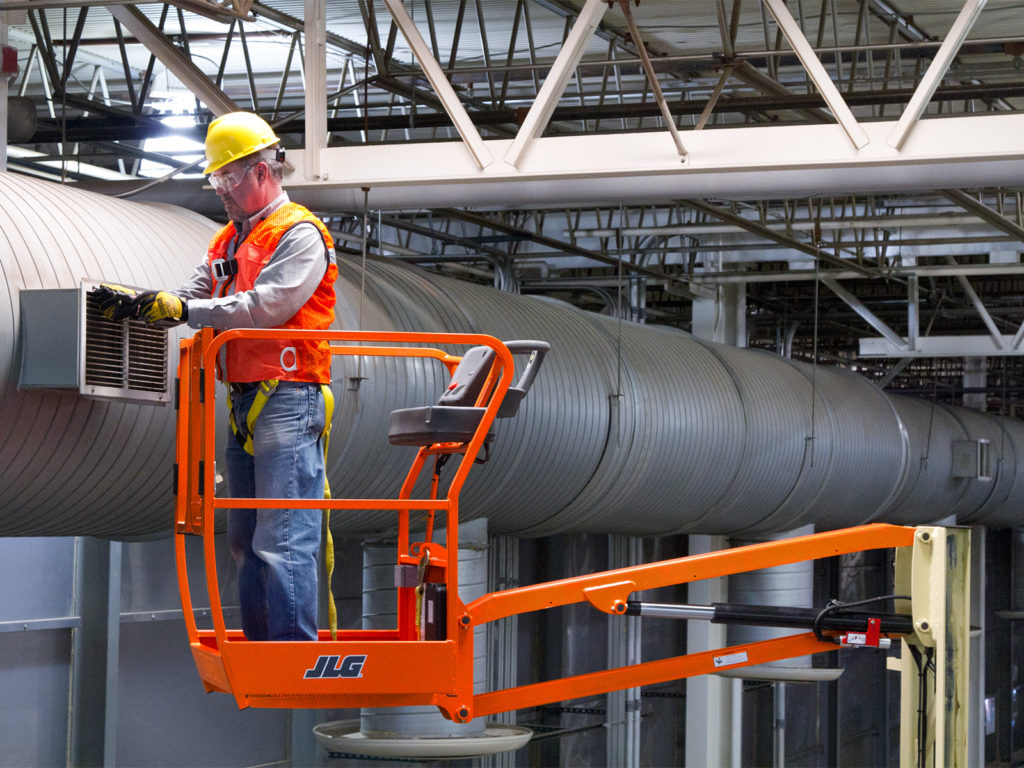4 Tips to Keep Your Vertical Platform Lift in Top Working Condition
A vertical platform lift serves a wide range of industries. By definition, a vertical platform lift is any piece of equipment that functions as an elevation device, allowing users to travel a distance from the ground up, enabling workers to reach areas they wouldn’t have had the capability to access. Sometimes referred to as aerial work platforms or mobile elevated work platforms (or MEWPs), two of the most popular types of lifts include scissor lifts and boom lifts.
Scissor and boom lifts provide value for these types of work applications:
- Construction sites and building maintenance
- Safety inspections
- Window washing and repair
- Reaching and picking produce
- Electrical line repair and maintenance
- Tree care
- Special events and entertainment (concerts, amusement parks, etc.)
- Indoor retail spaces, warehousing, and logistics
That being said, it is of utmost importance for your vertical platforms to always be in tiptop shape, ensuring that your staff avoids any untoward incidents in the workplace. After all, compliance with basic operational safety hazards is a must for any business to grow and flourish.
Avoid accidents in the workplace – regardless of the industry your business is in – by following these four tips to maintain your vertical platform lifts’ optimum performance.
Tip #1: Do a Daily Visual Check on Your Machine
Like all heavy equipment, a daily inspection of your vertical platform lift is necessary prior to use. Inspections help ensure that your lift is functioning as expected, which means that it is efficient and safe to operate.
Daily inspection is a necessary step every time operators switch hands at the end of every shift. It may seem like a repetitive, if not redundant, task, but it can save a life by preventing accidents before they occur.
Reviewing the service manual is a good first step to finding which parts of the lift to check. A walkaround inspection demands a visual check of your machine’s critical parts, such as the condition of the chassis. This includes checking for the following:
- Any leakage of fluids (oil, fuel, or battery fluid)
- Physical damage (dents, cracks, holes)
- Decals and placards must be readable
- Depending on the machine type, you will also need to check the powertrain
- Depending on the machine type, the number of daily checkpoints can vary
Tip #2: Check the Machine’s Battery and Top Up on Fluids as Needed
After the walkaround inspection, the next step is to check the machine’s battery to see if it still has enough juice in the tank to run. If the battery is okay, also check and refuel if your lift is powered by a combustion engine. Alternatively, for electric lifts, you will also want to check if adding water to the battery is needed.
You should also check your lift’s hydraulic oil levels. It is crucial for your lift’s hydraulic system to be kept clean, as it is an important part of the machine. This enables your business to enjoy more productive years out of it.

Tip #3: Perform a Function Check of Your Machine’s System
In an open area free of any obstruction, lift operators must perform a function check. This involves examining the parts, accessories, or attachments of the lift prior to operating the machine.
Make sure that no parts are coming loose, missing, or moving flimsily, and that the lift’s platform gate latches on accordingly.
Tip #4: Consult with a Professional, Factory-Trained Service Technician
Ultimately, while daily inspections and regular maintenance will help keep your vertical lifts in brand-new working condition, your business also has to consider that these types of equipment also require standardized inspections according to the hours they’ve been in operation.
Similar to the way your cars will need a visit to the auto shop after traveling X number of miles, your vertical platform lift has to undergo professional mechanical inspections after every 90 days or 150 hours of use, whichever milestone is reached first.
As mentioned earlier, it helps to check the user manual, so you’re made aware of the recommended preventive maintenance schedule. These schedules are specific to the different types of lifts, often dependent on the number of parts on your equipment.
Most lift manufacturers recommend an annual inspection done by a professional service provider, but it bears noting that the frequency of these maintenance checks should increase as your lift ramps up in use, or if you’ve been running it through harsh working environments. Wear and tear can definitely cause some issue later down the line.
CMI Equipment: Here to Lift Your Business Upward
With these four essential tips, your business gets to make the most of your vertical lift’s value and productivity. If there are any issues that may cause any problems, consult a professional and do not operate the machine.
As your reliable distributor of JLG Vertical Lifts for both indoor and outdoor applications, CMI Equipment delivers exceptional aftersales service, which includes maintenance, repairs, operator training, and original parts replacement.
For any questions, inquiries, or concerns regarding your vertical platform lift, don’t hesitate to contact us and we’ll get right back to you ASAP.



